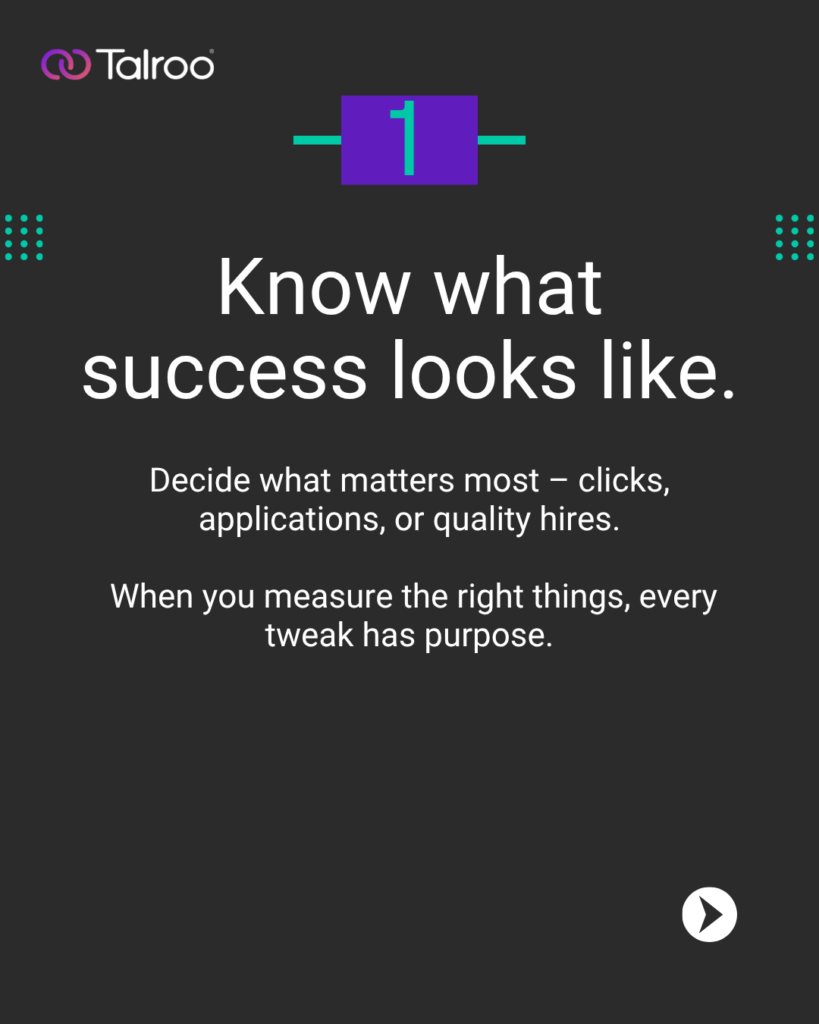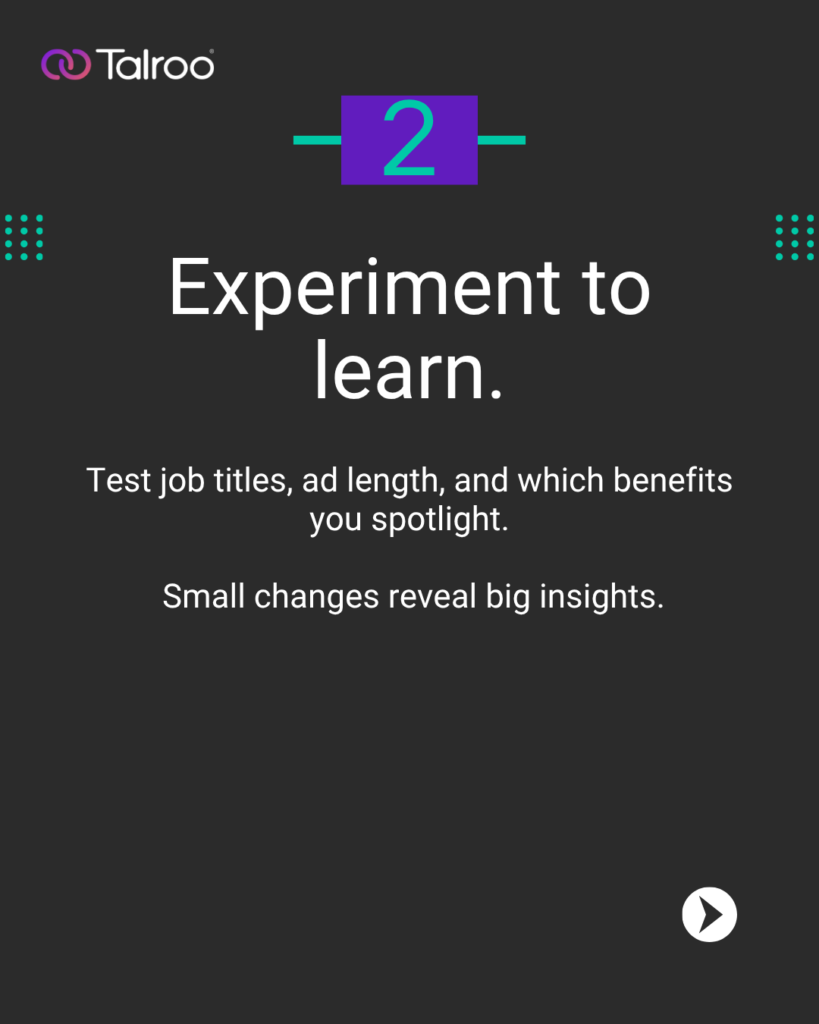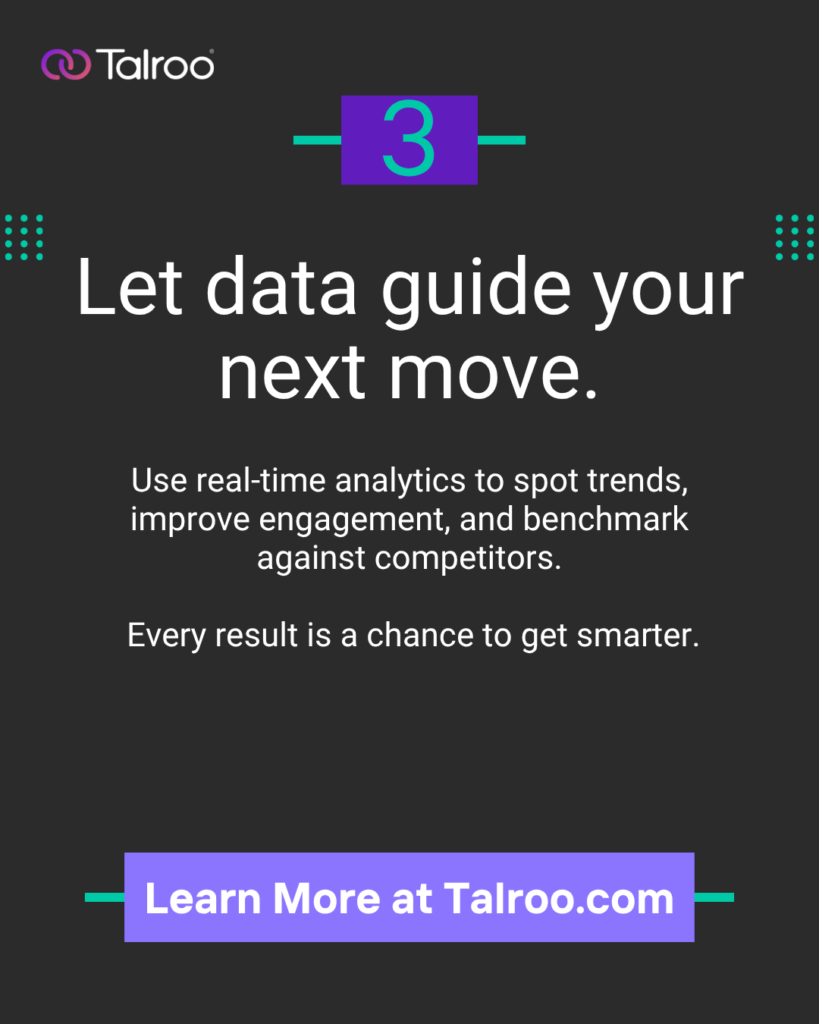
A Recruiter’s Guide to Performance-Driven Job Postings
Recruiters are under more pressure than ever to deliver results, and to do it quickly. Yet, one of the biggest bottlenecks in attracting the right talent isn’t your sourcing strategy, your job boards, or even your hiring tech. It’s your job posting. And we need to talk about it.
Outdated, uninspired, or poorly structured job ads can quietly sabotage your performance, no matter how much traffic you drive. If your job postings don’t capture attention or convert qualified candidates, you’re leaving talent (and ROI) on the table.
It’s time to rethink your job ads as high-performance marketing assets, not administrative listings. Let’s break down how to write job postings that attract the right candidates, boost conversion rates, and drive measurable recruiting success.
1. Start with a Headline That Performs
The job title is your first (and sometimes only) chance to get noticed. A strong headline balances search optimization with clarity and appeal.
Avoid:
- “Rockstar” or “Ninja” titles that obscure what the role actually is.
- Abbreviations or insider lingo that job seekers may not search for.
Do this instead:
- Use clear, searchable language: “Registered Nurse – Cardiac Unit (Full-Time, Nights)”
- Include key differentiators or incentives: “Warehouse Associate – $1,000 Sign-On Bonus + Weekly Pay”
- Keep it under 60 characters so it displays well on mobile devices and job boards.
Pro Tip: Pull search data from platforms like Talroo Insights to see which job title variants perform best in your market. Small tweaks, like changing “Customer Service Rep” to “Customer Support Specialist,” can dramatically impact visibility and clicks.
2. Structure for Scannability
Candidates don’t read job postings; they scan them. According to recruitment marketing studies, job seekers spend less than 14 seconds deciding whether to click “Apply.” To win attention fast, structure your job ad like a landing page:
- Use short paragraphs and bullet points. Break your content into digestible sections: “About the Role,” “What You’ll Do,” “What You’ll Bring,” and “Why You’ll Love It Here.”
- Lead with what matters most. Place salary ranges, location, and benefits near the top — job seekers want transparency.
- Use bold or bullet points for critical details. Highlight must-have qualifications and perks. Make them pop visually.
- Keep your total word count between 300–600 words. Enough to inform, not enough to overwhelm.
See what we did there? When your posting is easy to scan, you make it easy for job seekers to self-qualify, which means better quality applicants and fewer unqualified resumes in your pipeline.
3. Write Like a Marketer, Not a Manager
Too many job descriptions read like they were copied from a 10-year-old HR manual. But today’s candidates, especially in a competitive labor market, respond to brand storytelling, not bullet lists. Here’s the formula for high-performing job copy:
Lead with the “why.” Start with what makes this role or company exciting. Think beyond duties and requirements. Example: “Join a team that’s redefining logistics efficiency across the Southeast. As a Warehouse Lead, you’ll help streamline operations that deliver critical products to local hospitals and schools.”
Show impact. Candidates want purpose. Emphasize how their work contributes to the bigger mission.
Keep it conversational. Write like you’re talking to a person, not filling out a form. Replace jargon (“responsible for coordinating cross-functional alignment”) with simple, engaging language (“you’ll work with teams across departments to keep projects on track”).
Be transparent about pay and perks. Pay transparency laws are spreading fast — and job seekers now expect it. Job postings with salary ranges get up to 38% more applies, according to recent Indeed data.
4. Optimize for Search (Without Sounding Robotic)
A great job posting balances human appeal with SEO best practices. Think of it as writing for both the algorithm and the applicant. How to get it right:
- Use keywords naturally throughout the ad (especially in the title and first 100 words).
- Add location-specific language where relevant.
- Include synonyms for the role. For example, “CNA” and “Certified Nursing Assistant.”
- Keep your format clean: search engines and aggregators prioritize simple, readable text.
Talroo’s platform can help recruiters discover which keywords are trending in their industry or region, helping you build postings that rank higher and attract more qualified traffic.
5. Test, Measure, and Iterate
You wouldn’t run a marketing campaign without tracking conversions and job ads should be no different. Performance-driven recruiters test and refine their postings to continuously improve outcomes. Here’s how to approach it:
Step 1: Define your KPIs. What matters most: clicks, apply starts, completed applications, or quality of hire?
Step 2: A/B test different versions. Experiment with:
- Job titles (e.g., “Administrative Assistant” vs. “Office Support Specialist”)
- Ad length (short vs. detailed)
- Benefit highlights (sign-on bonuses, remote flexibility, growth opportunities)
Step 3: Analyze and adapt. Use real-time performance analytics to identify which postings perform best. Insights can show you candidate engagement trends, conversion rates, and even how your ad compares against competitors in your area.



6. Scale Your Optimization with AI
Here’s where things get interesting. AI can now help recruiters automate A/B testing and ad optimization at scale. AI-powered tools can:
- Rewrite your job ads for clarity, tone, or inclusivity.
- Predict which headlines or phrases will perform best based on historical data.
- Test multiple ad versions simultaneously, adjusting copy and structure in real time based on engagement metrics.
For example, Talroo’s AI-driven recruitment platform can analyze applicant flow data and surface insights to guide your next posting. You’ll know exactly which ad variations attract not just the most applicants, but the right applicants.
7. Align Your Copy with Your Employer Brand
Finally, even the most optimized ad should still sound like you. Consistency matters. When every job post reflects your tone, culture, and values, candidates experience a cohesive brand journey from first click to final offer.
Ask yourself:
- Does this job post sound like our company’s voice?
- Does it reflect the values we promote on our careers page?
- Does it make someone want to be part of what we’re building?
When your job ads tell a story that aligns with your brand, you’ll attract talent who not only can do the job but want to work for your company.
The Bottom Line: Your Job Postings Can Be Your Biggest Advantage
Performance-driven job postings are no longer optional; they’re the new recruiting advantage. By combining data, marketing psychology, and smart technology, recruiters can craft job ads that stand out in a noisy market and deliver measurable results.
With the right mix of human creativity and machine insight, your job postings can become one of your most powerful recruiting assets.
Ready to see how your postings perform? Use Talroo Insights to uncover real-time market data, benchmark your performance, and create job ads that attract, engage, and convert the right talent — every time.
If you enjoyed this article, you might also like:
Personalization at Scale: Turning Data-Driven Insights into Recruiting Success | Talroo
How to Make your Job Postings More Inclusive | TalrooHow to Optimize Job Postings for Candidate Search | Talroo




